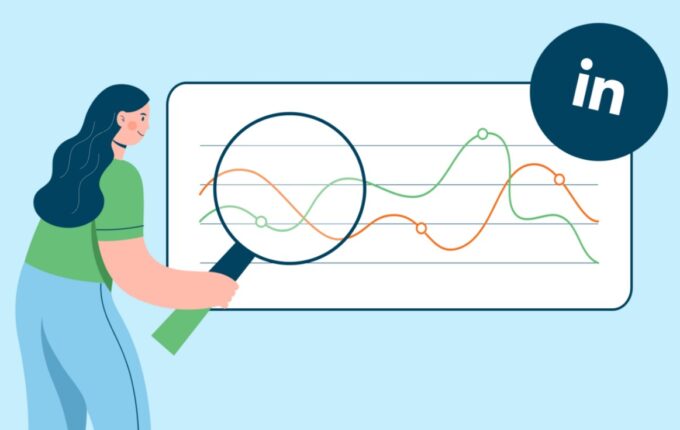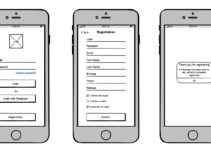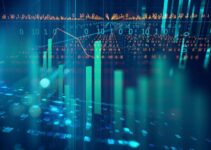In 2024, the digital landscape witnessed a significant surge in the use of LinkedIn scrapers. These tools, designed to extract data from LinkedIn profiles, have become a focal point in discussions about data privacy, technological advancements, and their implications in the professional world.
This article explores the various dimensions of this phenomenon, dissecting the reasons behind the rise of LinkedIn scrapers, their impact, legal considerations, ethical debates, technological advancements, and the future outlook.
Exploring the Popularity
LinkedIn, as a platform, has evolved into a treasure trove of professional data, attracting individuals and businesses alike. The rise in LinkedIn scrapers such as Scrupp, can be attributed to the increasing value of this data.
Companies use these tools to gather information on potential recruits, competitors, and market trends. Similarly, marketers and sales professionals find immense value in extracting contact details for lead generation and networking. This surge reflects a broader trend in the digital era: data is king.
Impact on Businesses and Professionals

Source: flexjobs.com
The proliferation of scraping tools has had a multifaceted impact. For businesses, these tools offer a competitive edge. Access to detailed professional data enables companies to tailor their strategies, from recruitment to marketing.
However, professionals on LinkedIn have expressed concerns. Privacy issues come to the forefront as personal details are scraped without consent, leading to unsolicited contacts and potential data misuse.
Legal Landscape
The legal aspect of LinkedIn scraping has been a battleground. In 2024, several high-profile cases highlighted the complexities. LinkedIn itself has taken legal action against scrapers, citing violations of their terms of service and privacy concerns.
However, the legal stance on scraping public data remains murky, with courts in various jurisdictions delivering differing verdicts. This legal ambiguity continues to fuel the scraper economy while leaving ethical and privacy concerns inadequately addressed.
Ethical Considerations
The ethical debate around LinkedIn scraping is intense. On one hand, proponents argue that scraping public profiles is fair game – if data is publicly available, it’s open for collection. However, opponents raise valid concerns about consent and privacy.
The act of making information available on LinkedIn, they argue, is not an implicit agreement to have that data harvested and used for other purposes. This ethical gray area challenges both users and the platform to reconsider the norms of digital privacy.
Technological Advancements Fueling Scrapers
Technological advancements have played a crucial role in the rise of LinkedIn scrapers. Improved algorithms, AI, and machine learning capabilities have made scrapers more efficient and sophisticated.
They can now mimic human browsing patterns to avoid detection, extract data more accurately, and even integrate the data with other software tools. This technological leap has made scraping more accessible and effective, contributing to its widespread adoption.
Navigating Data Privacy and Security

Source: cz.linkedin.com
The rush of LinkedIn scrapers in 2024 has brought data privacy and security into sharp focus. As these tools harvest large volumes of personal data, the risks associated with data breaches and misuse have escalated.
The concern is not just about the unauthorized collection of data but also about how this data is stored, shared, and used. Companies using scrapers must navigate complex data protection laws, like GDPR in Europe and CCPA in California, which impose strict guidelines on data handling and user consent.
This landscape has forced businesses to balance their data collection strategies with rigorous compliance to avoid legal repercussions and safeguard user trust.
User Response and Platform Measures
LinkedIn users, in response to the increased scraping activities, have become more vigilant. Many have limited the amount of personal information they share on their profiles, used privacy settings more effectively, and become more cautious about accepting connections.
LinkedIn, on its part, has ramped up its efforts to detect and prevent unauthorized scraping. The platform has implemented more sophisticated algorithms to identify and block scraping bots.
These measures, while not foolproof, represent a concerted effort to protect user data and maintain the integrity of the platform.
The Role of Artificial Intelligence
Artificial intelligence (AI) has played a pivotal role in both enabling and combating LinkedIn scrapers. On the one hand, AI technologies have made scrapers more adept at extracting data efficiently and evasively.
On the other, LinkedIn and other platforms have employed AI to enhance their security protocols and detect scraping activities. This ongoing AI arms race is a key component of the scraper phenomenon, with both sides continually evolving their technologies to gain the upper hand.
Insights and Analytics

Source: blog.loomly.com
Another factor fueling the scraper rush is the demand for insights and analytics. In a data-driven business environment, the information gleaned from LinkedIn profiles is invaluable for market analysis, talent acquisition, and customer engagement strategies.
Scrapers provide a means to gather this data en masse, offering businesses insights that would be time-consuming and difficult to compile manually. This aspect underscores the practical utility of LinkedIn scraping in the contemporary corporate world.
The Ethos of Open Data
The discussion around LinkedIn scrapers also touches on the broader ethos of open data. Advocates for open data argue that information, especially that which is publicly available, should be freely accessible for the benefit of innovation, research, and societal advancement.
This perspective views scraping as a method of democratizing access to data. However, it clashes with the proprietary interests of platforms like LinkedIn and the privacy rights of individuals, highlighting the complex interplay between open data ideals and real-world implications.
Preparing for the Future
As we look to the future, it is clear that LinkedIn scraping and similar practices will continue to evolve and remain a topic of debate. The landscape will likely be shaped by advancements in technology, legal frameworks, and societal attitudes towards data privacy and open data.
Businesses, individuals, and platforms will need to adapt to these changes, finding a balance that respects privacy while leveraging the potential of big data. The conversation around LinkedIn scraping is far from over, and its outcomes will have lasting impacts on the digital world.
End Note

Source: lyne.ai
In summary, the rush of LinkedIn scrapers in 2024 has highlighted a complex interplay of technological innovation, legal challenges, ethical considerations, and the evolving nature of data privacy.
As the digital world continues to expand, the issues surrounding LinkedIn scraping will remain at the forefront, influencing how we interact with data and technology in our increasingly connected world.







